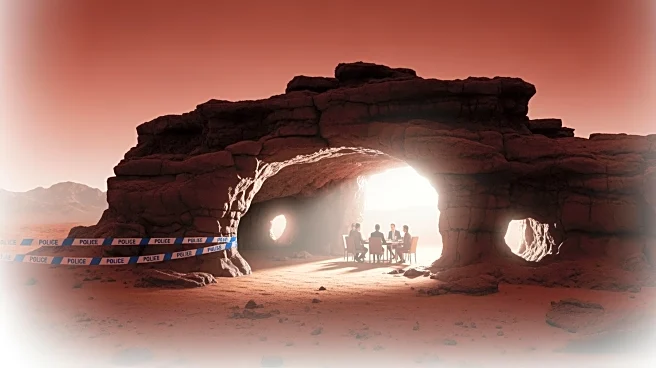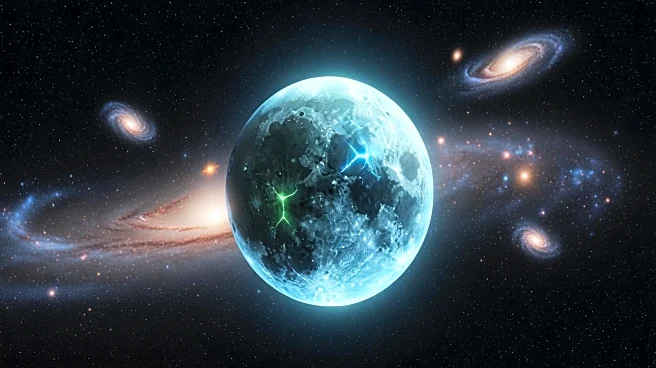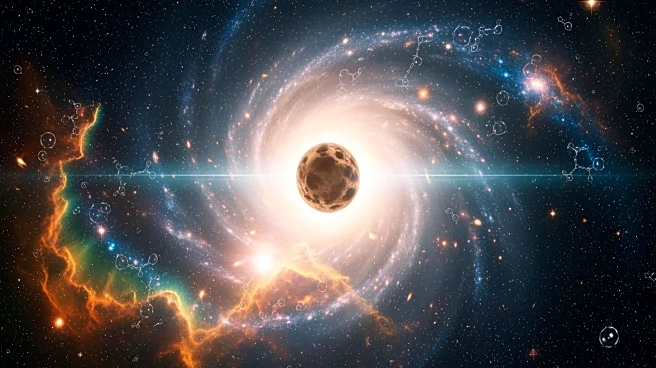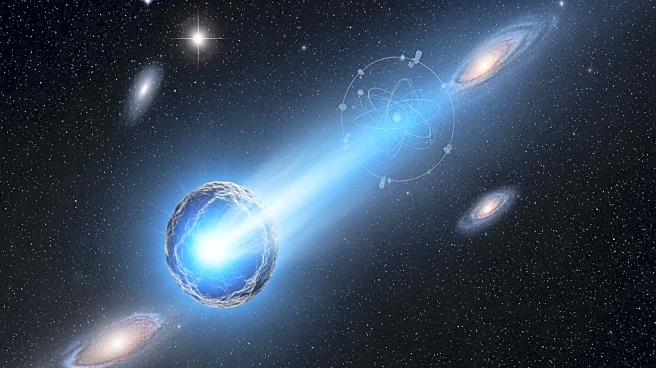What's Happening?
The James Webb Space Telescope (JWST) has made a groundbreaking discovery by detecting complex organic molecules, including acetic acid, in ice around a young star in the Large Magellanic Cloud. This marks
the first time such molecules have been found outside the Milky Way. The research, led by University of Maryland and NASA scientists, suggests that prebiotic chemistry can thrive in low-metallicity and harsh radiation environments similar to those of the early universe. This discovery pushes the timeline for the origin of life's ingredients further back and into more diverse settings than previously thought.
Why It's Important?
The detection of complex organic molecules in ice beyond the Milky Way strengthens the hypothesis that some planets may begin their life journey already equipped with essential organics. This finding could have significant implications for our understanding of the conditions necessary for life to develop and the potential for life beyond Earth. It also opens new avenues for research into the formation of life-friendly environments in the universe, potentially influencing future astrobiological studies and missions.
What's Next?
The discovery is expected to prompt further investigations into the presence of organic molecules in other galaxies and their role in the formation of life. Researchers may focus on identifying similar environments where prebiotic chemistry could occur, expanding our understanding of life's potential beyond Earth. The findings could also influence the design of future space missions aimed at exploring these environments.
Beyond the Headlines
This discovery highlights the importance of advanced telescopes like JWST in expanding our knowledge of the universe. It underscores the potential for life to exist in diverse and previously unconsidered environments, challenging existing models of life's origins. The research may also lead to ethical and philosophical discussions about the implications of finding life beyond Earth.











